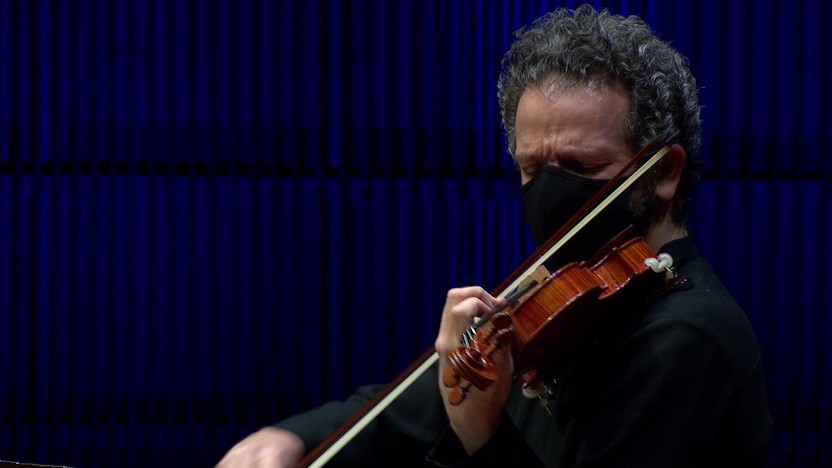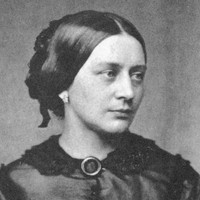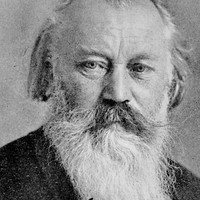Love’s Longing



Growing up in the musically fertile city of Leipzig, Clara Wieck blazed through a rigorous curriculum of piano, composition and ear training devised by her father, the noted pedagogue Friedrich Wieck. Clara made her public debut at age nine, the same year an 18-year-old law student with musical inclinations, Robert Schumann, moved into the Wieck household to take intensive piano lessons. His piano career fizzled out after a hand injury, but 11 years after he was first enchanted by Clara’s talents — and after overcoming a bitter and protracted legal battle with her father — the struggling composer and journal editor, Robert, was able to marry the budding superstar pianist, Clara.
Clara found a way to keep up a concert career while raising children and caretaking her husband living with a mental illness, but she never resumed the pace of composing that peaked during her teenage years. Though small in quantity, the works from her married years are superb in quality, a sign of the high level of musical discourse and mutual respect in the Schumann family. She composed the Three Romances for Violin and Piano in 1853 for an upcoming tour with the young Hungarian violinist Joseph Joachim, a significant new addition to the Schumann orbit. (That same year, Joachim introduced another young friend to the Schumanns, Johannes Brahms, who remained one of Clara’s closest confidantes for the rest of her life.) The Three Romances were among Clara’s final works, coming not long before Robert’s psychiatric breakdown in 1854. Even after he died in 1856 and she continued her historic career as a pianist, she abstained from releasing any new compositions during the forty years she survived him.
The instrumental form of the Romance had its origins in a simple, sentimental style of song. Clara wrote a number of Romances for solo piano, as well as this set of three with violin. The first, in a subdued, walking pace, engages the violin in song-like melodies over a bed of lush, free-ranging piano harmonies. The second strikes up an Allegretto tempo and exchanges coy musical gestures, including elegant trills and playful grace notes. The “quick and passionate” finale uses rapid figurations in the piano to amplify the heated emotions.
Aaron Grad ©2022

(Duration: 3 min)
The piece was commissioned by The Saint Paul Chamber Orchestra for SPCO flutist Alicia McQuerrey. The beginning slips and slides around in the lower register of the instrument in a bluesy style, and then the music moves up to the middle and upper registers for a characteristic rippling flute melody.
Adolphus Hailstork ©2020

When the Lyris Quartet approached me in 2015 to compose a sort of commentary on the story of Intimate Letters: String Quartet No. 2, by Leos Janáček, I thought that it was a remarkable idea. The first thing — the only thing, really — that popped into my mind was the tragedy of unrequited love (hence the name, Unrequited). When I first heard Janáček’s Intimate Letters performed live, the emotion of the piece jumped out at me: the wild shifts of tempo, the beautiful and plaintive melodies, the stark dynamic contrasts. I wanted to illustrate my perspective on this strange relationship between Janáček and Kamila Stösslová, by telling the story of a man who goes through different phases of emotion, before finally coming to terms with the fact that his love for her is one-sided — it will never be returned the way he would like. I sought to compose Unrequited so that it moves, like the five stages of grief, through a variety of emotions — from romantic, pure love, through paranoid, obsessive, neurotic possessiveness, arriving finally at despondent acceptance.
This piece was commissioned by Madelyn, Jerald and Lee Jackrel and is dedicated to and premiered by the Lyris Quartet.
— © Billy Childs
Billy Childs ©2015

In 1890, and again in 1894, Brahms announced his retirement from composition. Both times, he returned to create more music for one particular performer, clarinetist Richard Mühlfeld, from the court orchestra in Meiningen, Germany. The conductor Fritz Steinbach wisely arranged for Mühlfeld to play privately for Brahms in 1891; breaking a year’s compositional silence, Brahms responded with a Clarinet Trio (Opus 114) and a Clarinet Quintet (Opus 115), both composed during his summer holiday in an Austrian spa town. Mühlfeld premiered both works that winter, joined by the string quartet led by Brahms’ longtime friend Joseph Joachim.
Brahms’ model for the Clarinet Quintet was a work that Mozart composed for the same ensemble of clarinet, two violins, viola and cello in 1789. (As with Brahms, Mozart’s inspiration was personal: he wrote the quintet and a later concerto for his close friend Anton Stadler.) Perhaps it is just coincidence that Mozart and Brahms both embraced the clarinet in what proved to be their final years, but the combined impact of their labors—especially the matching quintets—tend to conjure adjectives like “wistful” and “nostalgic” and especially “autumnal,” as if the music foretells, with peace and resignation, the nearness of death.
There is indeed a bittersweet quality to the Allegro movement that begins the Brahms Clarinet Quintet, much of it generated by the continual pull of the listener’s expectations between major and minor tonalities. The movement begins with sweetness, as the violins twine together in thirds; at this point, the ear perceives the key as D major. Almost a minute passes before the harmony lands with any real force on the actual home key of B minor, and soon enough it leaves again for D major, the setting of the secondary theme. Those two keys are flip sides of the same coin, sharing all the same scale tones, and the movement continually flips that coin such that we bounce from the hopefulness of the major key to the heaviness of the minor.
The slow movement again treads a delicate emotional line between joy and sadness. Partly the effect here comes from the tone color, with the strings muted, but the real pull at the heartstrings is the result of a musical technique known as modal mixture. In this movement the home key is B major, but some of the tones used are actually native to B minor. Each time those darker notes enter, starting with the very first measures, they create little pangs of disturbance. At the center of the movement, a contrasting passage sinks fully into B minor for music tinged with Gypsy flair.
Instead of a boisterous scherzo, the Clarinet Quintet clears the air with a smooth Andantino third movement. The work’s recurring conflict appears here as well, with a mischievous interlude in B minor dominating the latter half of the movement until the initial D-major music returns for one last phrase.
The finale takes shape as a theme and variations, elaborating a folk-like melody in B minor. Continuing the work’s ongoing pattern, one of the variations shifts to the major key, but ultimately the quintet is destined for a minor-key resolution.
— © Aaron Grad
Aaron Grad ©2016
Get driving directions and find nearby parking.
Find dining options close to the venue.
View seating charts to find out where you'll be seating.
SPCO concerts are made possible by audience contributions.
For exclusive discounts, behind-the-scenes info, and more:
Sign up for our email club!
